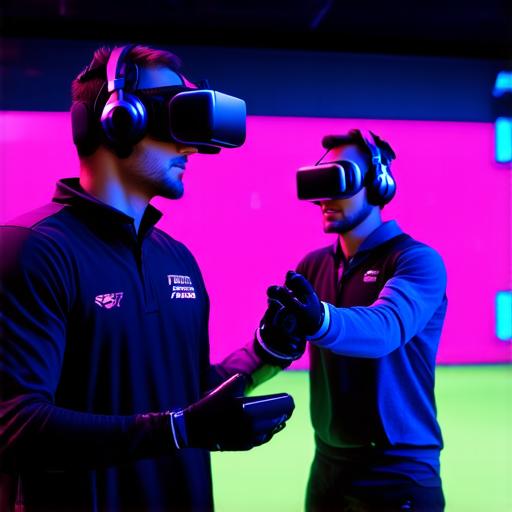The Early Days of Virtual Reality
The concept of VR dates back to the 1960s when Ivan Sutherland created Sketchpad, an interactive computer graphics program that allowed users to create and manipulate 3D objects. In the late 1970s, the first VR headset was developed by Edward Catmull, co-founder of Pixar Animation Studios. The headset, called the HMD (Head-Mounted Display), provided a stereoscopic view of a virtual environment and allowed users to look around as if they were in a real world.
In the early 1980s, VR technology began to gain traction in the gaming industry with the release of games like Spacewar! and Star Trek: The Next Generation. These games used VR headsets and controllers to provide users with immersive gaming experiences that were unlike anything they had experienced before.
The Evolution of Virtual Reality Technology
Over the years, VR technology has evolved significantly. In the 1990s, the first commercially available VR system was released, called the Virtual Theater System (VTS). The VTS used a head-mounted display and a set of sensors to track the user’s movements and provide a more immersive experience.
In the early 2000s, the development of wireless VR headsets made it possible for users to move more freely without being tethered to a computer or other device. This led to the creation of new applications for VR technology, including training simulations for military personnel and medical professionals.
The introduction of motion controllers in the late 2000s revolutionized VR gaming by allowing players to interact with virtual objects using their hands and body movements. This led to the development of more complex games that required players to physically move and interact with their environment.
In recent years, advancements in display technology have made it possible to create higher resolution VR displays that offer a more immersive experience. The release of consumer-grade VR headsets like the Oculus Quest 2 has also made VR technology more accessible to a wider audience.
The Purpose of Virtual Reality Technology
The purpose of VR technology is to create an artificial environment that simulates real-world experiences and allows users to interact with them as if they were in the real world. This technology has many applications, including gaming, training simulations, education, and healthcare.
In gaming, VR technology offers a more immersive experience that transports players into a virtual world. This has led to the development of new games that require players to physically move and interact with their environment, providing a unique gaming experience.
Training simulations for military personnel and medical professionals have also benefited from VR technology. These simulations allow trainees to practice skills in a safe and controlled environment, without the risk of injury or harm.
In education, VR technology has been used to create virtual field trips and interactive learning experiences that allow students to explore new environments and learn about different cultures and histories.
In healthcare, VR technology has been used to treat a variety of conditions, including phobias, anxiety disorders, and post-traumatic stress disorder (PTSD). By creating a safe and controlled environment, patients can confront their fears and work towards recovery.
Virtual Reality Developers: Opportunities and Challenges
Virtual reality developers have a unique opportunity to create immersive experiences that were previously impossible. With advancements in display technology and motion controllers, VR developers can now create more complex and interactive games that require players to physically move and interact with their environment.
However, VR development is not without its challenges. Creating a virtual environment that feels authentic and immersive requires careful consideration of factors such as lighting, sound, and movement. Developers must also ensure that their VR experiences are accessible to a wide range of users, including those with disabilities or limited technical expertise.
Summary
The purpose of virtual reality technology is to create an artificial environment that simulates real-world experiences and allows users to interact with them as if they were in the real world. Over the years, VR technology has evolved significantly, offering new applications for gaming, training simulations, education, and healthcare. Virtual reality developers have a unique opportunity to create immersive experiences that were previously impossible, but must also navigate the challenges of creating an authentic and accessible virtual environment. As VR technology continues to evolve, we can expect to see even more exciting applications and possibilities emerge in the future.

